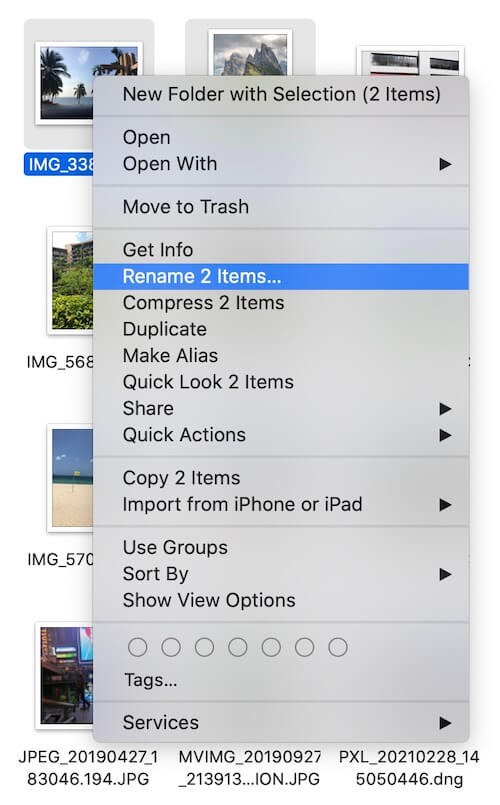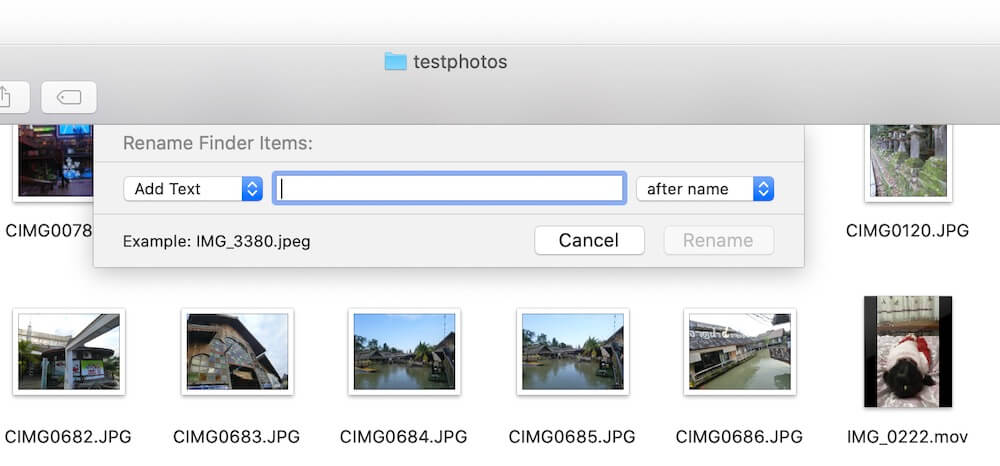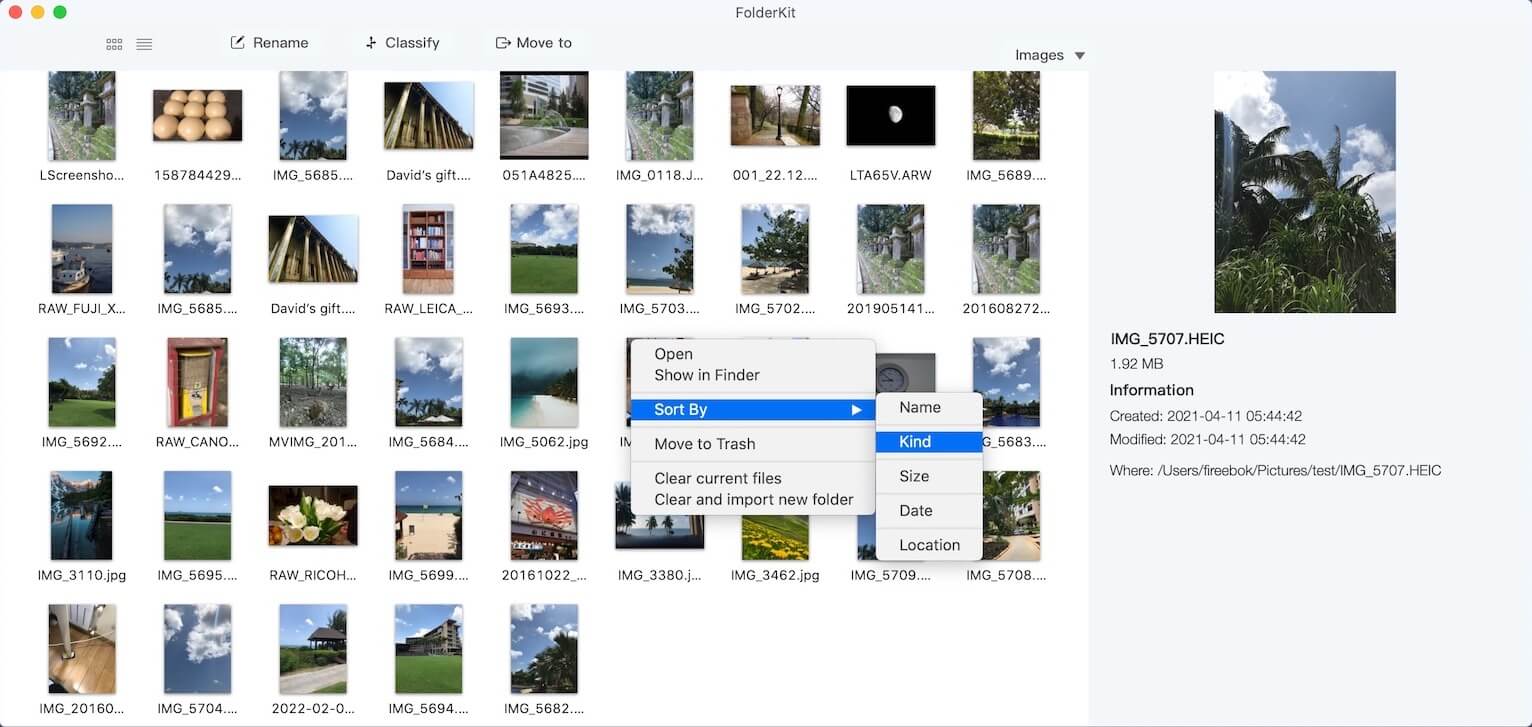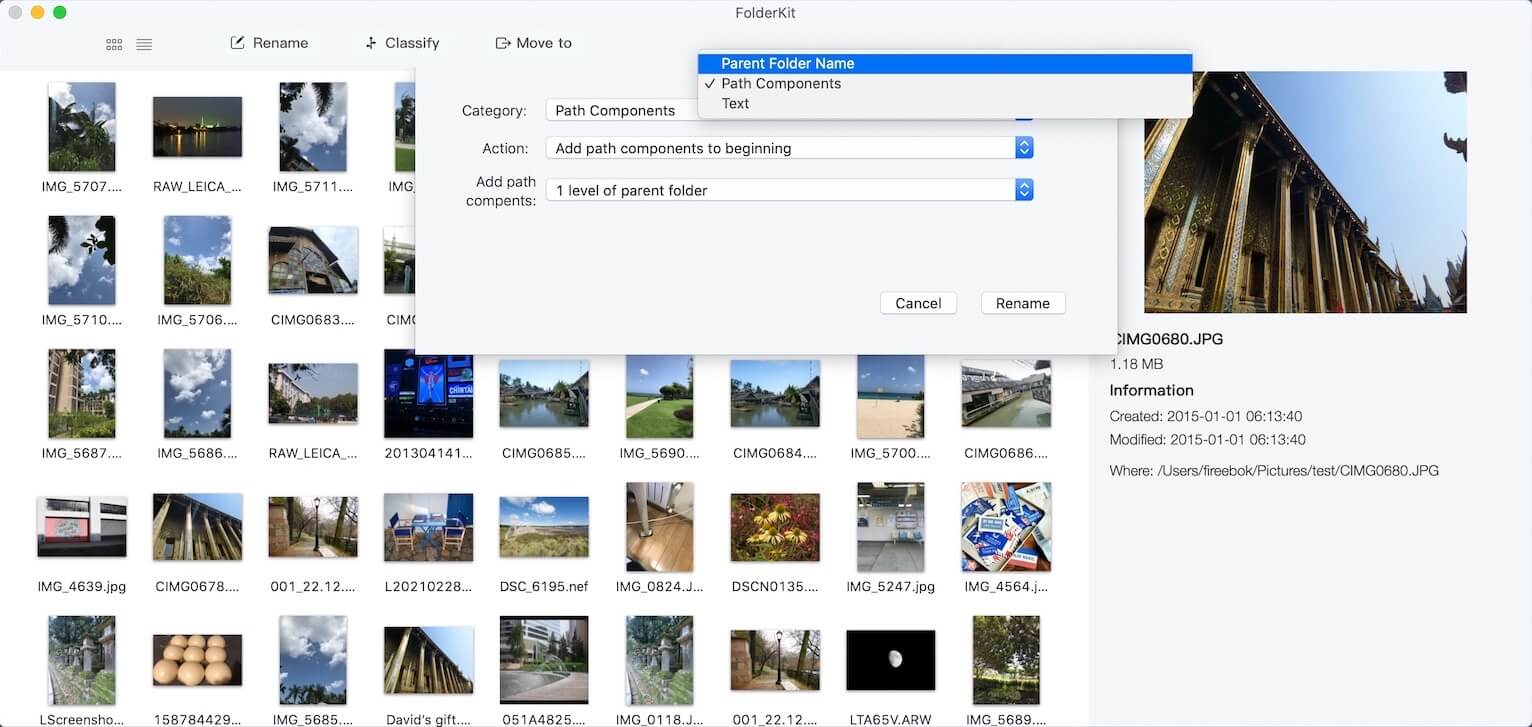File names play a pivotal role in organizing and managing digital content effectively. When faced with the task of renaming numerous folders and subfolders, particularly within a multi-level directory structure, the challenge arises: How can you utilize the uppermost parent folder names to rename files collectively? Fret not, as this article is here to guide you through the process of batch renaming files on a Mac computer and harnessing the power of upper-layer parent folder names for this purpose.
1. Renaming Files within Finder
The standard method to rename files involves employing macOS's built-in renaming function. By selecting the files that require renaming in Finder and right-clicking on them, you can opt for the "Rename (number) items" feature. This action triggers the macOS rename dialog to appear.

You are presented with three ways to modify the filenames—Add Text, Replace Text, and Format Text. After making the necessary changes, simply click the "Rename" button to finalize the process.

However, it's important to note that the built-in macOS renaming feature exclusively handles multiple files within a single folder. For scenarios involving a multi-tiered folder structure, the conventional approach of manually opening each folder to select and rename files is far from optimal.
2. Using FolderKit to Rename Files in Multi-Tiered Folders
While several third-party renaming applications enhanced capabilities compared to macOS's native functions, many of them fall short when it comes to managing multiple files across multi-tiered folder structures. For effectively renaming files within such intricate setups, the recommended solution is the Fireebok FolderKit application — a versatile tool designed to manage files within multilevel folders and subfolders through a unified view. FolderKit also offers a robust renaming feature tailored to accommodate files in multi-tiered folder structure.
Download and install FolderKit app on your Mac, it supports macOS 10.10 and later.
Launch the FolderKit application. And drag and drop or open the main folder containing various subfolders into the FolderKit, which will list all the files under folders and subfolders in one view without opening folders and subfolders individually. And select the files that require renaming.

Upon selection, click the "Rename" button, the rename window will appear. This window provides options to rename files based on Parent Folder Name, Path Components, or custom Text. You can choose to use Parent Folder Name or Path Components to rename files from multi-level folders.

Once adjustments are made, confirming the changes is as simple as clicking the "Rename" button. By adopting this approach, you can sidestep the arduous process of manually sifting through multilevel folders and subfiles while ensuring that your files are systematically and accurately renamed.
In conclusion: efficiently renaming files within a complex folder structure on your Mac is made achievable through the combined powers of the native macOS functionalities and the FolderKit application. Whether you're handling a handful of files or navigating through a labyrinthine directory setup, these methods streamline the renaming process and contribute to an organized digital environment.
About Fireebok Studio
Our article content is to provide solutions to solve the technical issue when we are using iPhone, macOS, WhatsApp and more. If you are interested in the content, you can subscribe to us. And We also develop some high quality applications to provide fully integrated solutions to handle more complex problems. They are free trials and you can access download center to download them at any time.
| Popular Articles & Tips You May Like | ||||
 |
 |
 |
||
| How to Recover Deleted Text Messages from Your iPhone | Top 6 reasons WhatsApp can’t backup | How to Clean up Your iOS and Boost Your Device's Performance | ||
